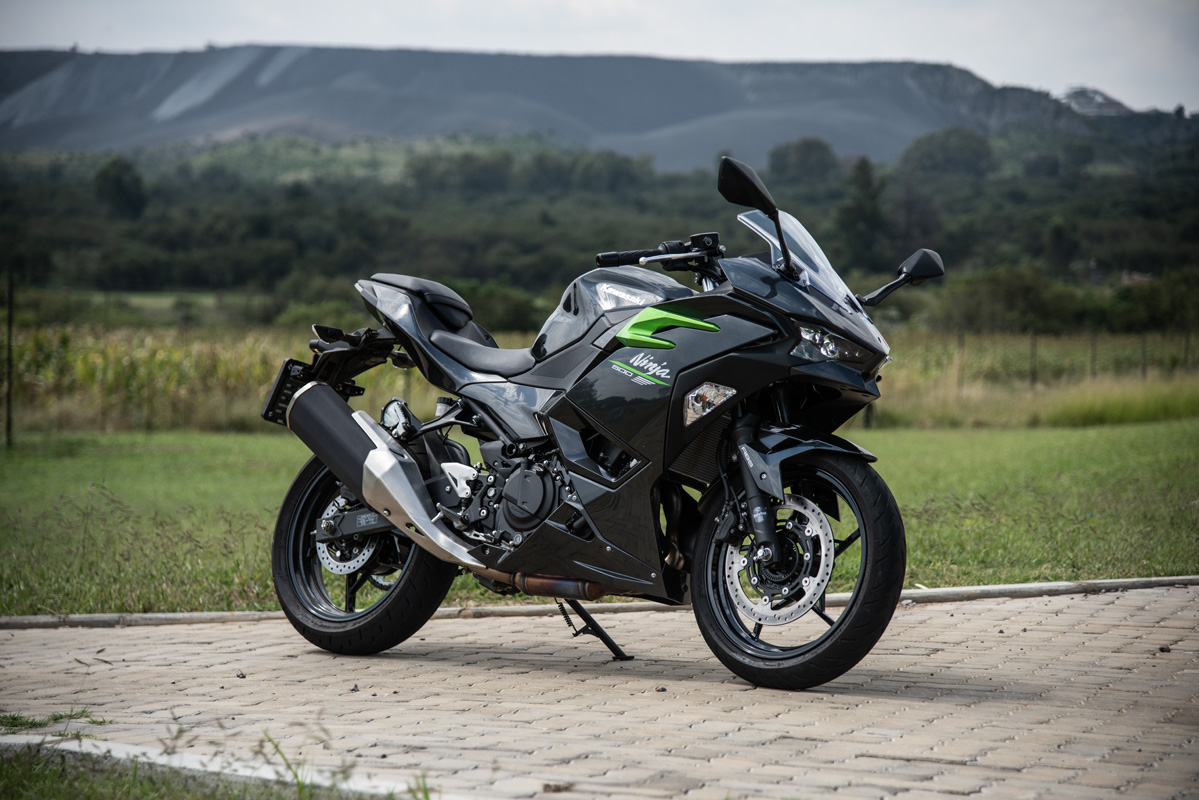
Riding the Ninja 500 really got me thinking as well as reminiscing. South Africans have always been besotted with speed, so when that relates to motorcycles, it means the bigger the engine, the better. This is all good and well, but the more power and speed you build into the equation, the more skill is needed to unleash the potential performance. It also means that no matter what your skill level, a modicum of restraint is required, or you will reap the whirlwind!
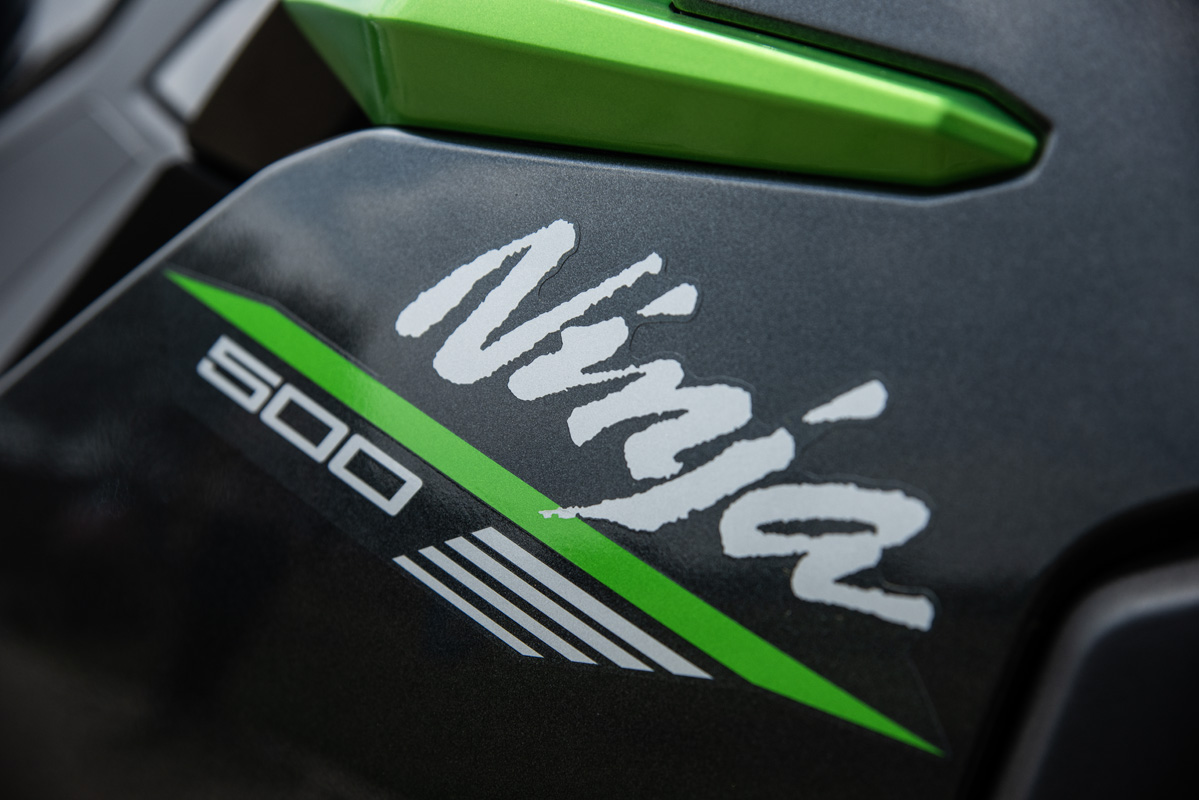
Every now and then, a motorcycle comes along which is so much more than the sum of its parts. It becomes a giant killer in the right hands and on the right road. A few classic examples that come to mind are Yamaha’s legendary RD350LC, Honda’s VFR400 NC30 and Kawasaki’s ZXR400, all bikes that hark back to the 80s and 90s. The bikes we had back then were actually mind-blowing when viewed with the wisdom of hindsight. By comparison, current bikes are almost somewhat sterile. Let’s see how Kawi’s Ninja 500 stacks up against their own 1995 vintage ZXR400, a 30-year-old model.
| 2025 Ninja 500 | 1995 ZXR400 |
| Engine: 451 cc DOHC parallel twin | Engine: 399 cc DOHC 4-cyl inline |
| Power: 45,4 hp @ 9,000 rpm, 42,6 Nm @ 6,000 rpm | Power: 59 hp @ 12,000 rpm, 40 Nm @ 10,000 rpm |
| Brakes front: Single 310 mm disc 2 piston | Brakes front: Double 300 mm disc 4 piston |
| Brakes rear: Single 220 mm disc | Brakes rear: Single 240 mm disc |
| Front suspension: 41 mm conventional, no adjustment | Front suspension: 42 mm USD, fully adjustable |
| Wet weight: 172 kg | Wet weight: 177 kg |
| Top speed: 190 km/h | Top speed: 215 km/h |
| Standing ¼ mile: 12,98 sec @ 160,38 km/h | Standing ¼ mile: 12,20 sec @ 170,3 km/h |
Makes you think, doesn’t it? Kudos to Kawasaki, as in 2023, they built a modern rendition of the ZXR400 called the ZX-4RR Ninja KRT, which we unfortunately do not get in SA. This screamer makes 76,43 hp @ 14,000 and 39,6 Nm @ 13,200 rpm. That, sports lovers, is almost 200 bhp to the litre!
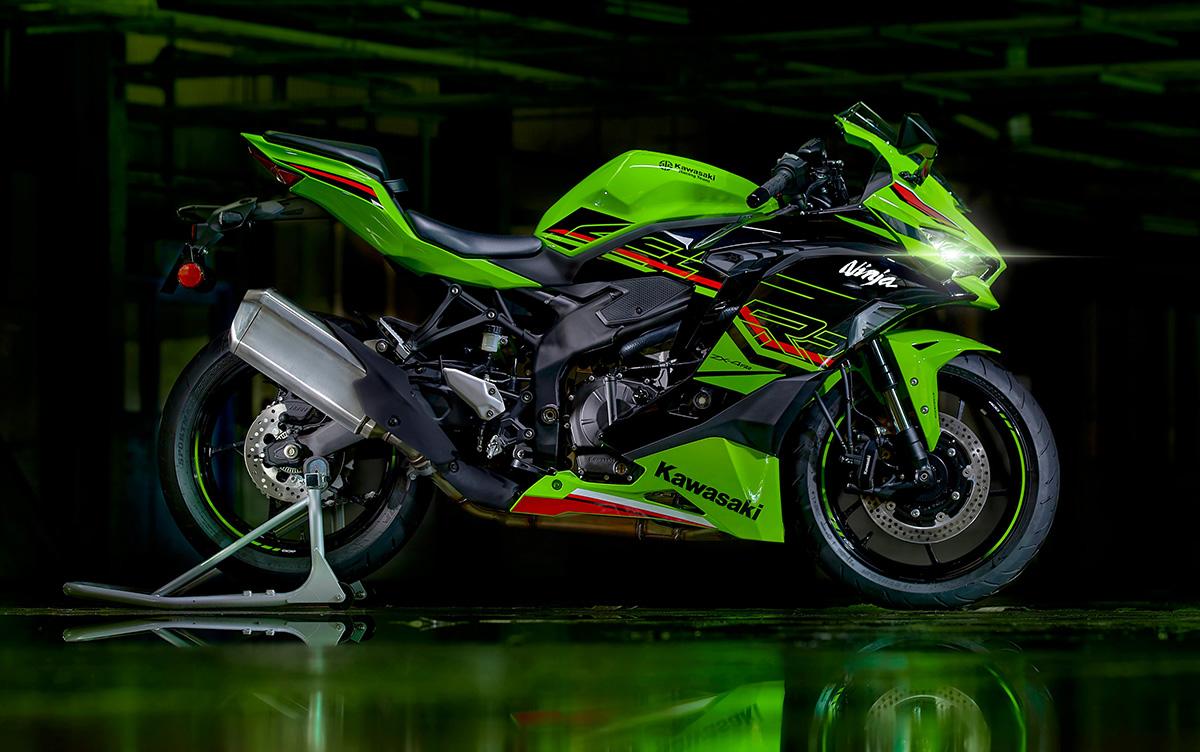
Ok, let’s stop dreaming and get back to the reality of what the Ninja 500 represents. In the real world, the 500 (actually 451 cc) produces its power in a user-friendly way. It makes only a smidge more power than the 400 Ninja that it replaces, but significantly, it does it at 1000 fewer revs. Similarly, and significantly, the 500 produces a full 5.6 Nm more torque at 2000 lower revs. Incredible what Kawasaki has achieved with 52 cc’s more capacity! This makes the 500 a different motorcycle entirely.
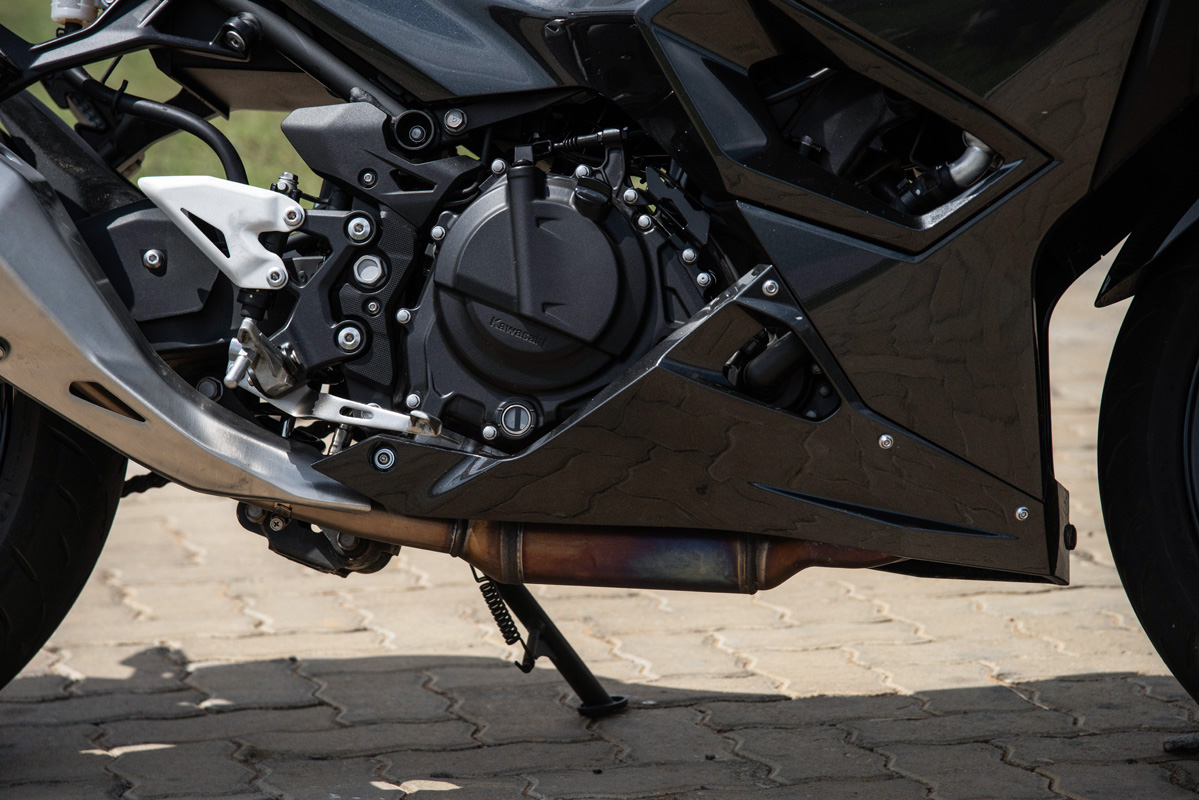
No clutch slipping to get away and usable power right through the rev range. The 500 can literally be short-shifted at 4,000 rpm and out-accelerate traffic. In fact, the way it slices and dices traffic is both effortless and fun. Power delivery is linear, and the higher it revs, the harder it pulls. Its ¼ mile acceleration matches that of Kawasaki’s giant killing GPZ 550/4, a bike that I raced with some success in 6-hour endurance races back in the early 80s.
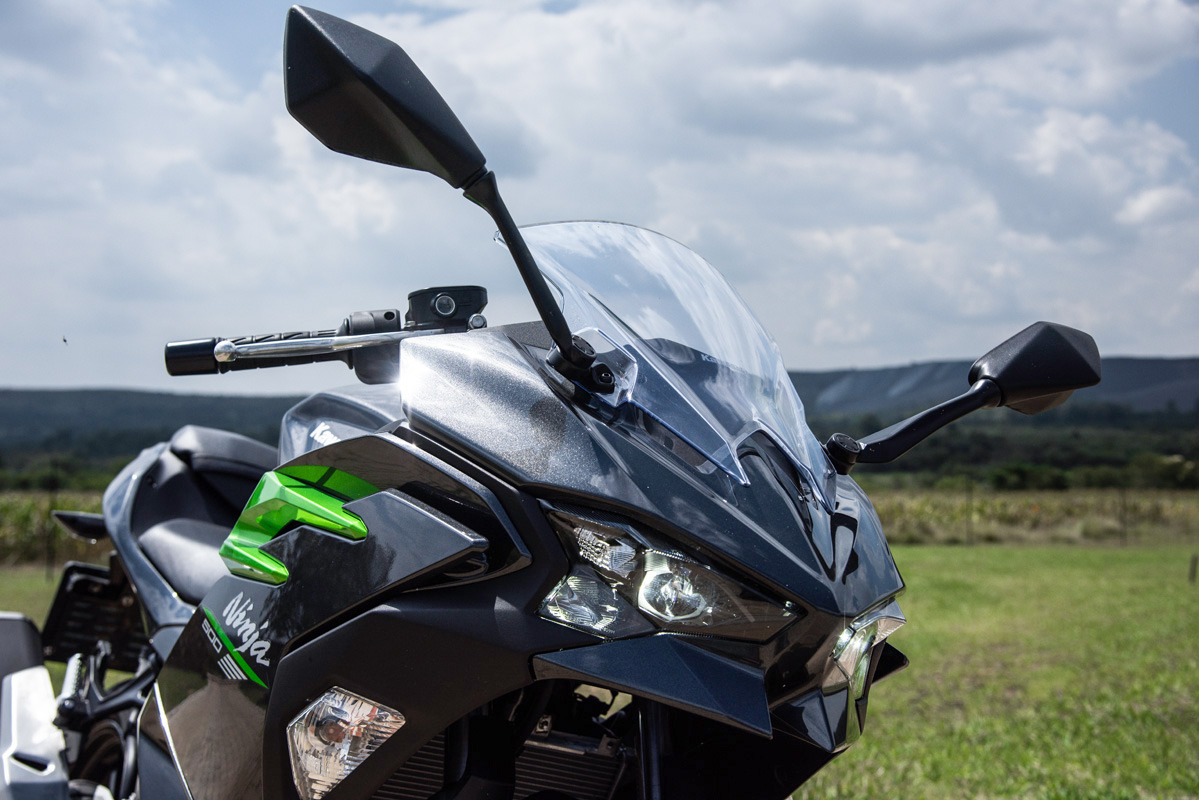
Here is the kicker: the Kawasaki Ninja 500 has a chassis and handling characteristics that are almost otherworldly. The bike is light and extremely agile, so it requires no effort to change direction or steer where you want it to go. Ridden smoothly with clinical input and the Ninja steers with absolute precision, allied to uncanny stability. The fact that the rear shock is preload adjustable only, and there is no front suspension adjustment, matters not a jot. This is as good a handling motorcycle as I have ever ridden and better than most. Granted, it doesn’t make the sort of power that corrupts, but it makes much of what it does! On a tight and twisty road, and in the hands of a competent rider, it will humble bikes with four times the power.
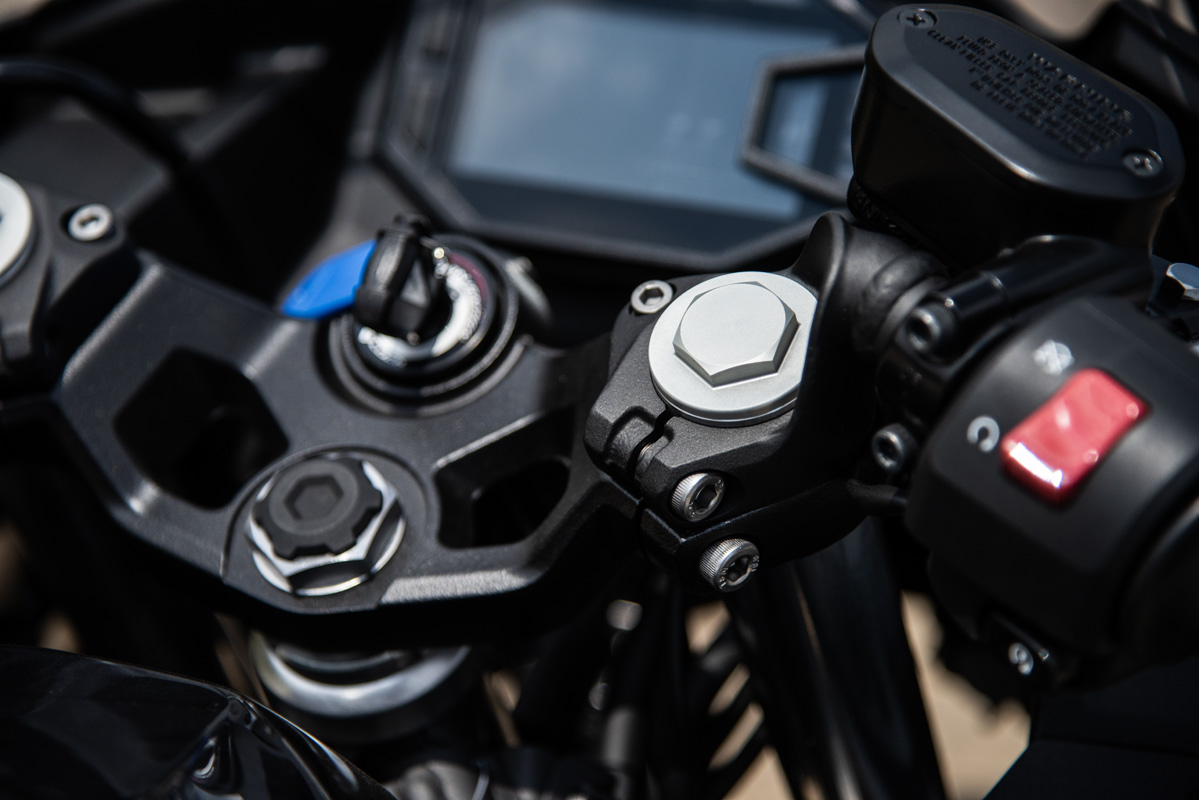
Once again, we are reminded of what absolute fun and enjoyment can be had on a lightweight bike with decent power and a good chassis and suspension. The ride quality is good, even over poor surfaces, and the bike is small enough to not have a huge stretch to the clip-on bars. The screen keeps the windblast off your chest but leaves your head in clean air.
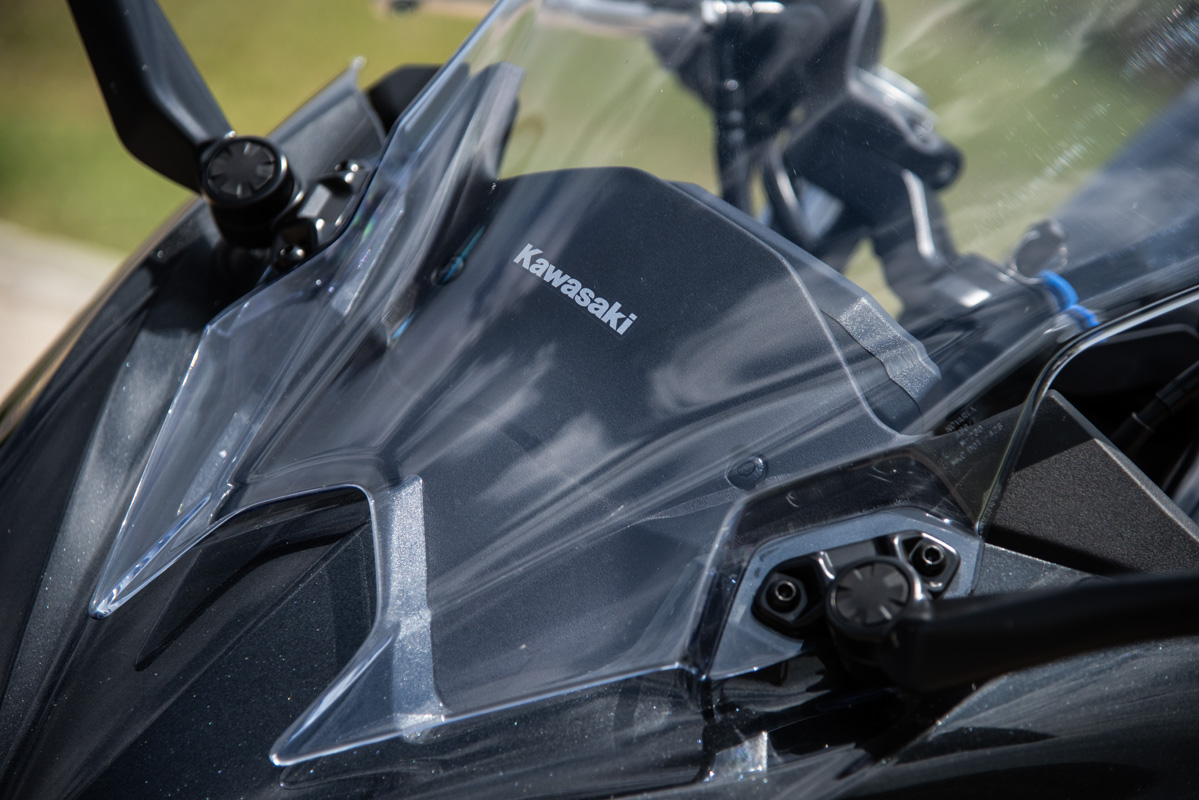
140 km/h cruising is easy with still 3,000 revs in hand before the redline. Light touring is, therefore, a doddle. Fuel economy is excellent, with 30 km/L quite easily attainable with normal riding (including the odd special stage). A 14L tank gives a decent range. Being narrow, means that the little Kawi sneaks through traffic with aplomb. The widest point is probably the mirrors, which stand out on long stalks from the fairing. They give you a clear image at all speeds.
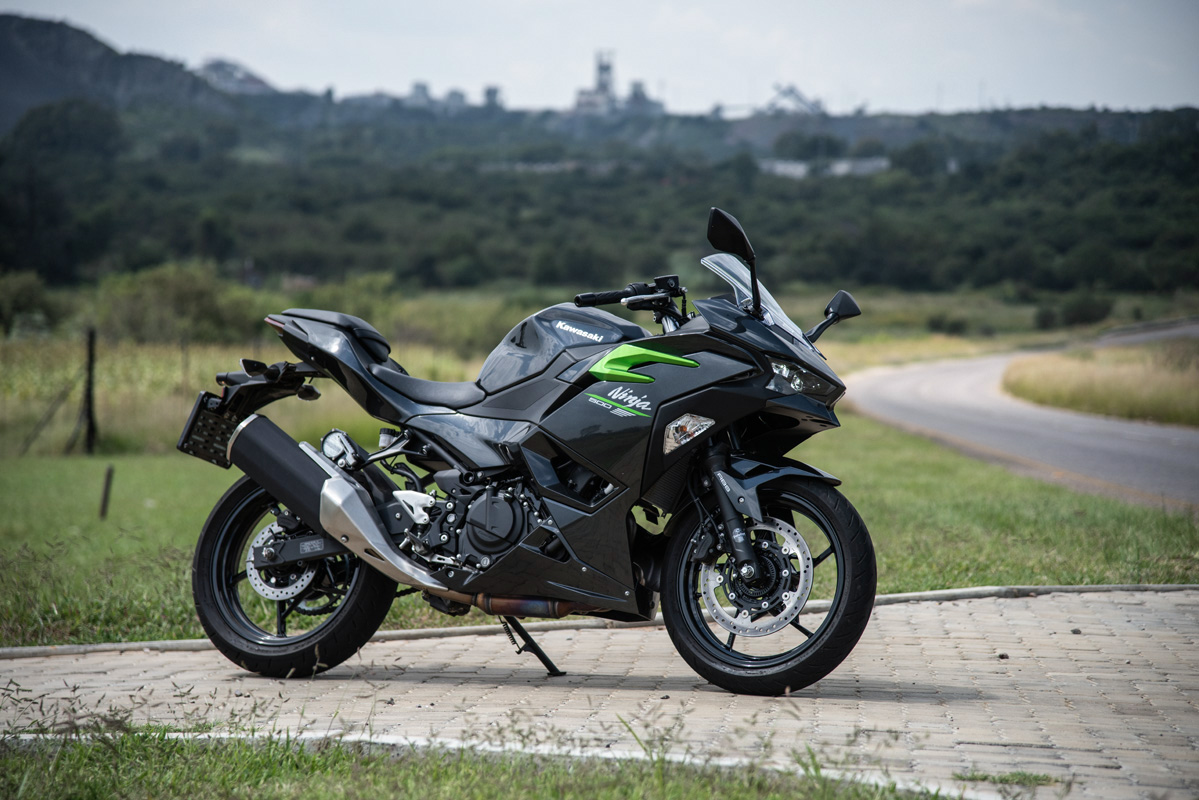
The Ninja 500 is a seriously sharp-looking bike. From the supercharged H2 down to the 500, the look is pure Ninja. The riding position is sporting but not extreme like a ZX10. Despite my somewhat lanky 6’3” frame, I found the Kawi comfortable in sports motorcycle terms. The 785 mm seat height makes it accessible to virtually all riders. With its light weight, agility and all-round ergonomics, it would be a brilliant bike for women with a sport bike bent.
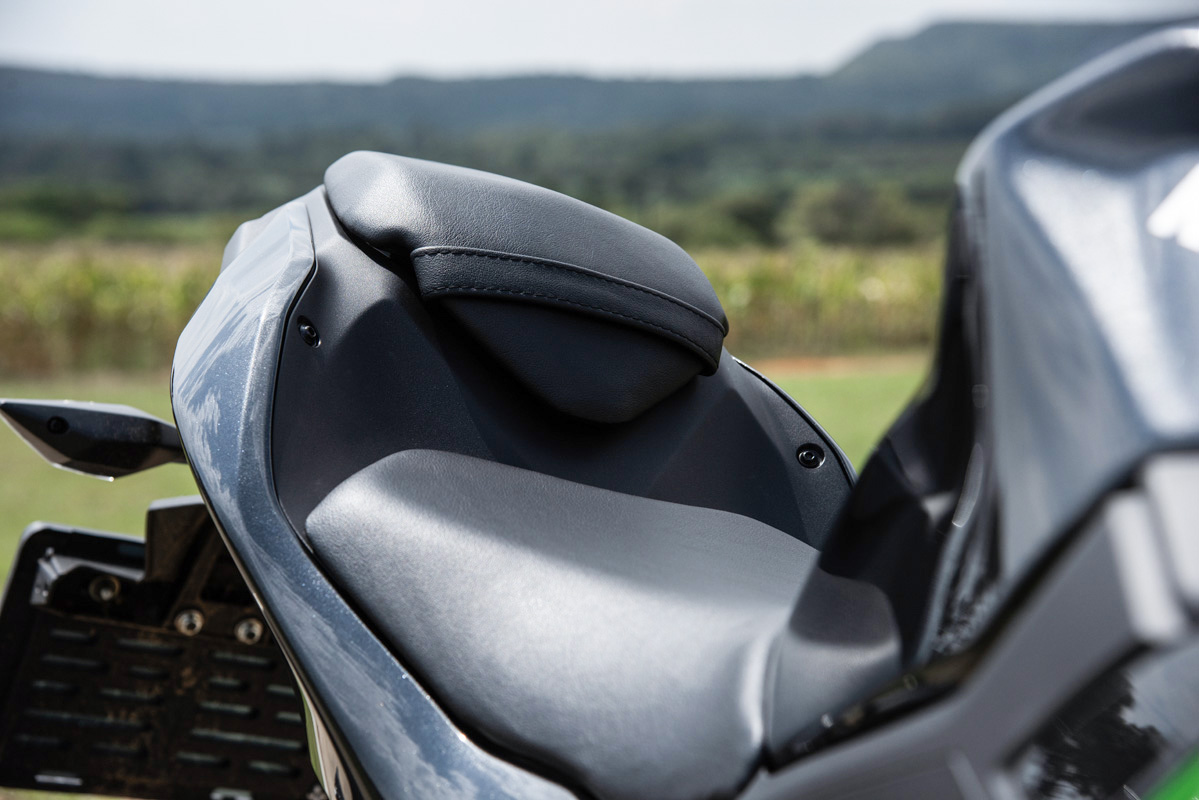
The suspension, which is adjustable for preload only on the back shock, once again makes a strong case for non-adjustable, well-set-up suspension. It has been my experience over the years that suspension adjustment is an acquired science that, in reality, not many riders have acquired! When the suspension gives a compliant ride like this and keeps things tidy on all road surfaces at all speeds, then all you really need is preload adjustment to compensate for a seriously porky rider or when loading a passenger. Short hop passenger duty is cool, however, if two-up touring was your objective, this would not be the bike you would consider.
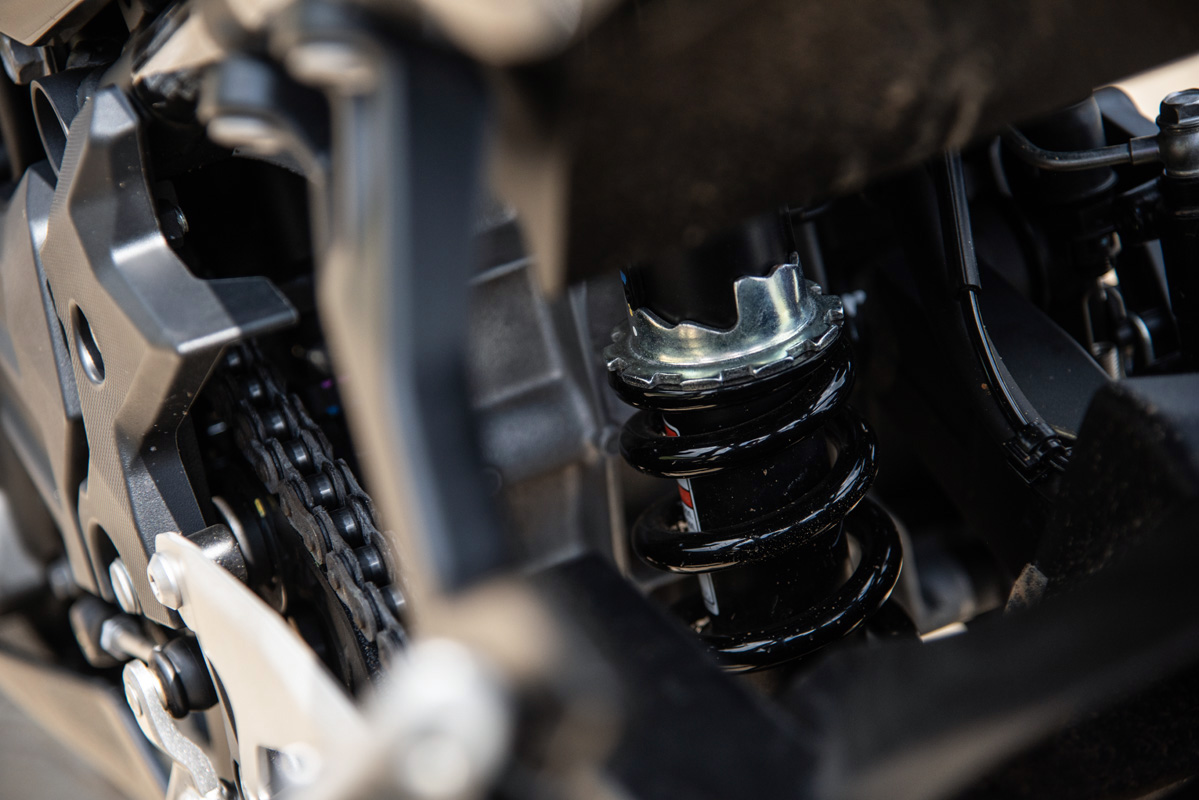
At R124,995, the Kawasaki Ninja 500 offers fair value. If you are a sportbike kind of guy or girl and want to commute in the week, and do some light touring on the weekend, then this could be the bike for you. The trump card is that you have a weapon for a windy road. Fire the little Ninja through a set of tight curves, and you too, will become a believer!
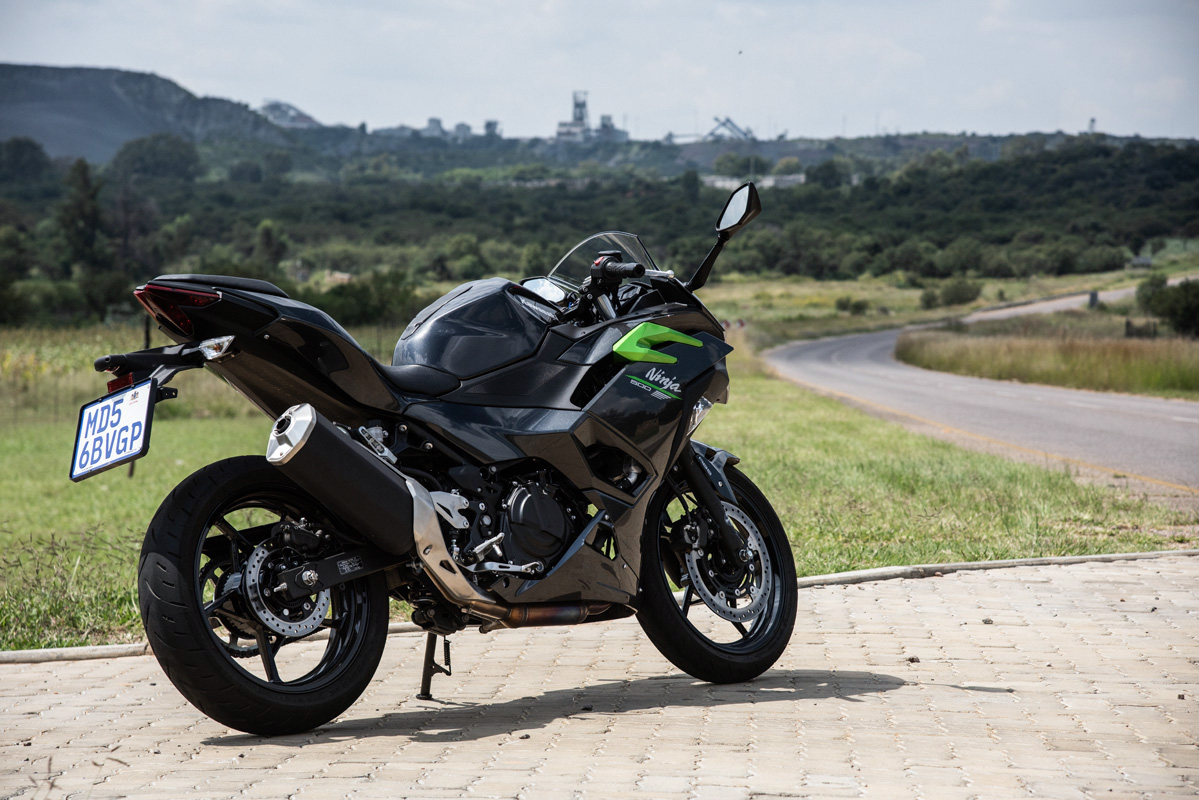
Kawasaki Ninja 500
For more information on the bike featured in this article, click on the link below.





